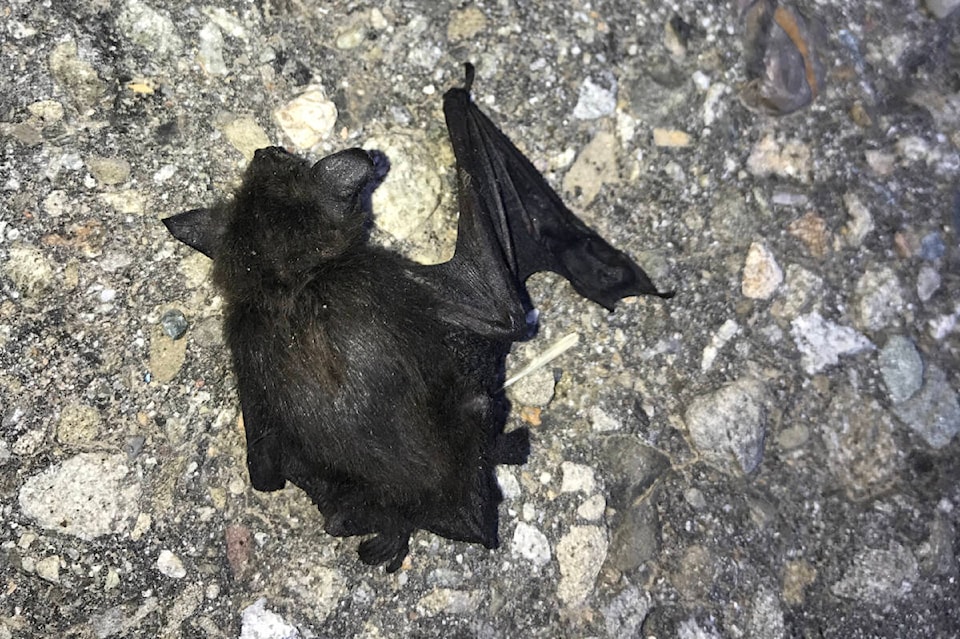As White-Nose Syndrome (WNS) continues to threaten B.C.’s bat populations, the Kootenay Community Bat Program (KCBP) alongside the Province of BC are asking for the public’s assistance in the fight to detect and prevent the spread.
Primarily, residents are asked to report any bat activity they observe in winter, as bats should be currently hibernating, and to report any sick or dead bats they come across before May 31.
READ MORE: Researchers race to study probiotic before white-nose syndrome spreads to B.C. bats
WNS, a fungal disease harmless to humans, has been devastating North American bat populations by attacking the animals as they sleep, causing them to wake up to clean the fungus from their skin. This causes them to use up energy, and can lead to the bats ultimately dying from hypothermia and starvation.
The fungus appears on their wings and skin, which gives the appearance of a white nose.
Millions of bats have been killed across North America, with some populations reduced by more than 90 per cent in certain species.
The Little Brown and Northern Bats, both found in B.C., have been listed as Endangered under federal Species at Risk legislation.
This is a serious problem, because bats are a key predator for numerous invertebrate species, making them essential to the balance of ecosystems in parts of the province. According to KCBP, bats also help provide billions of dollars in economic benefit by helping control agricultural, forest and urban pests, says the KCBP.
WNS was first detected on the west coast near Seattle in 2016 and has been detected in several counties in Washington since then.
It’s only a matter of time before WNS spreads to B.C., say biologists, which is why people need to keep their eyes open for affected bats in all southern regions of the province.
KCBP says that because bats hibernate alone or in small groups across B.C., detection of WNS is challenging, and public support is necessary to give the organization the best shot at understanding how the disease might spread and how to respond.
“We are encouraging the public to report dead bats and sightings of winter and early spring bat activity to the B.C. Community Bat Program,” said Elodie Kuhnert, regional coordinator at KCBP.
Bat carcasses can be tested for WNS, and reports of winter and spring activity can help researchers pinpoint regions with unusual bat activity.
If you observe bat activity throughout the spring and winter, or come across a dead bat, you are encouraged to report to the B.C. Community Bat Program online at www.bcbats.ca , via email at info@bcbats.ca or by calling 1-855-922-2287 (1-855-GOT-BATS).
Also important to note is that due to this ongoing research, biologists have discovered that healthy bats are also known to be occasionally active in the winter, and some choose to hibernate in woodpiles or under house trip.
Sleeping bats should be left alone, snap a photo from distance and report it to the B.C. Community Bat Program. If you need to move a bat, visit www.bcbats.ca to learn how and never touch one with your bare hands.
If your pet comes into direct contact with a bat, you will need to seek further information regarding the risk of rabies to you and your pet.
paul.rodgers@kimberleybulletin
Like us on Facebook and follow us on Twitter
